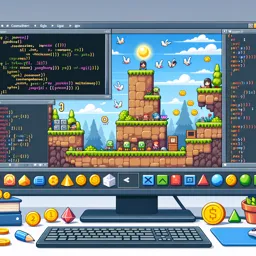Level design lies at the heart of creating memorable and engaging game experiences. It involves crafting the environments, challenges, and flow within a game, greatly influencing how players interact with the world and perceive the gameplay. Far beyond merely placing assets on a map, level design is about shaping the journey, setting the pace, and telling a story through spatial composition.
Core principles of level design
- Readability: Good levels provide clear visual cues that guide players intuitively. Elements such as lighting, color contrasts, and landmarks help players understand where to go next and what to do.
- Pacing: Alternating between moments of high action and periods of calm can keep players engaged and prevent fatigue. Careful pacing ensures that each area of the level maintains excitement and anticipation.
- Challenge and reward: Introducing escalating difficulties and well-placed rewards encourages exploration and mastery without overwhelming players.
- Player agency: Offering multiple paths, optional objectives, or dynamic environments gives players a sense of freedom and increases replayability.
- Theming and storytelling: Every level should contribute to the overall narrative or theme of the game, using visuals, audio, and layout to immerse players in the world.
Workflow and tools for effective level design
The process of level design often begins with brainstorming and sketching ideas on paper or digitally. Designers then move to grayboxing, where simple shapes outline the spaces and flow of a level. This step allows for quick iteration and testing of gameplay mechanics before detailed assets are added.
Modern game engines provide built-in level editing tools, along with asset libraries, scripting capabilities, and real-time previews. Collaboration between designers, artists, and playtesters is key throughout the process to ensure that the level achieves its intended goals.
User testing and iteration
Playtesting is essential for refining level design. Watching players interact with a level often uncovers unforeseen issues or opportunities for improvement. Designers should gather feedback, observe player behavior, and be willing to revise layouts, objectives, or pacing accordingly.
CONCLUSION
Level design is a delicate blend of creativity and technical skill within game development. By applying core principles, leveraging the right tools, and valuing feedback, designers can create worlds that captivate, challenge, and delight players from start to finish.
































